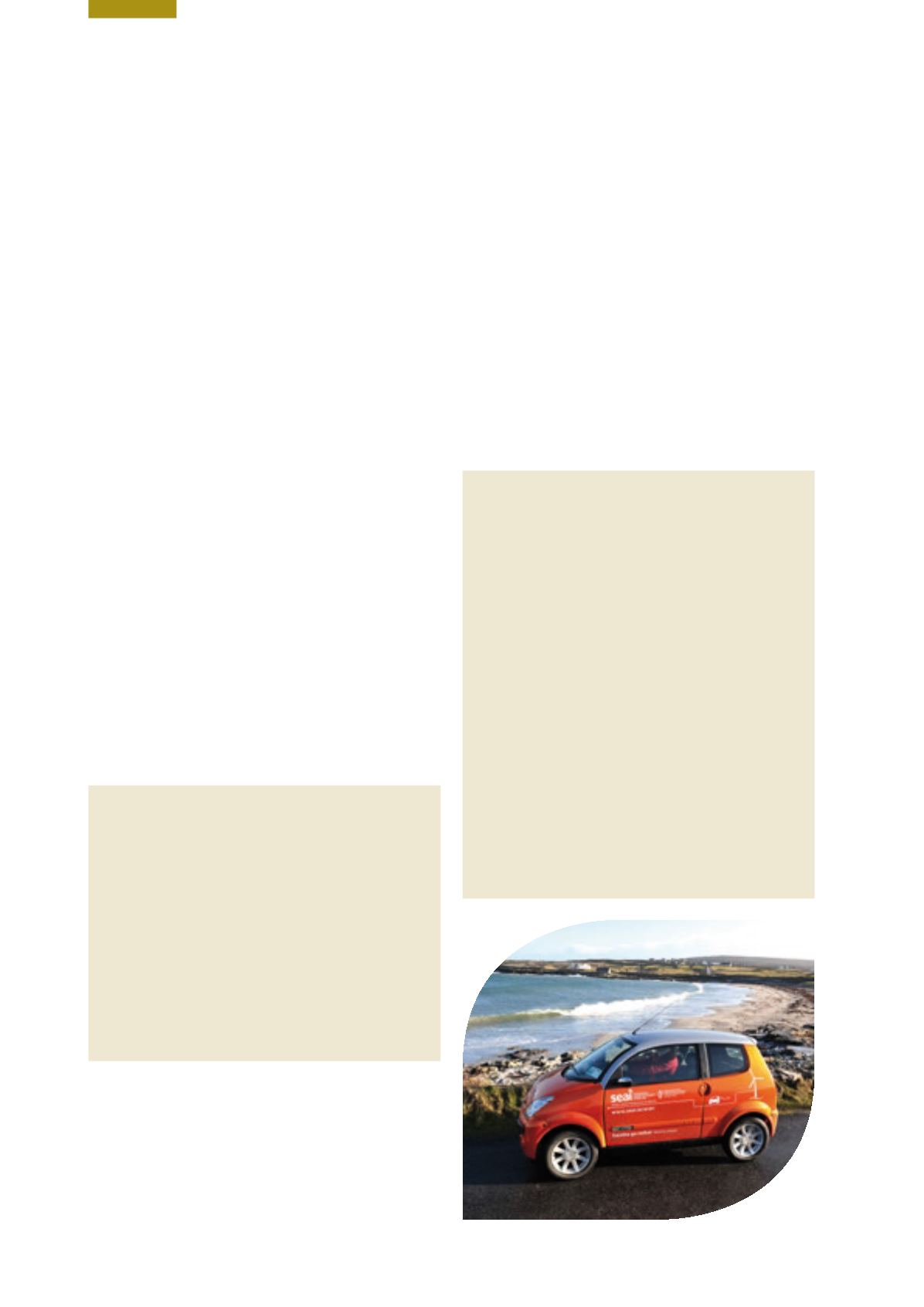

Ireland’s Environment – An Assessment 2016
168
Alternative Fuels
Promoting the use of alternative fuels including
electricity is a key policy objective
.
The use of alternative fuels, including electricity, forms a
significant part of government policy to reduce transport
emissions. Under the EU’s Renewable Energy Directive
(2009/28/EC), Ireland is obliged to deliver 10% of transport
energy by renewable sources by 2020 – this is called the
RES-T (renewable energy in transport) target. The Biofuels
Obligation Scheme, which places an obligation on suppliers
of transport fuels to ensure that 6% (by volume) of petrol
and diesel is produced from renewable sources, e.g.
ethanol and biodiesel, is set to increase this obligation to
8% from 2017 (NORA, 2016). In practice, the consumption
of biofuel is predominantly achieved by the blending
of liquid biofuels with petrol and diesel. Biodiesel is the
dominant biofuel (72%), with the rest being bioethanol.
To promote renewable electricity in transport, a grant
support scheme for electric vehicles (EVs) enables
purchasers of such vehicles to receive up to €5,000 off
the cost price, and EVs are also treated favourably under
the motor tax system, qualifying for VRT relief of up to
€5,000. In addition, a tax incentive for companies paying
corporation tax allows companies to write off 100% of the
purchase value of qualifying energy-efficient equipment
against their profit in the year of purchase. In 2014, the
Electricity Supply Board (ESB) successfully completed the
installation of electric vehicle fast chargers across the
country, with a fast charger located every 60km along
Ireland’s main roads (ESB, 2016).
Electric Vehicles: Case Study of the
Aran Islands Electric Vehicle project
Twenty-four households on the Aran Islands have
participated in a pilot project to demonstrate the smart
grid technologies needed to transfer and store wind
energy in EVs. Each household was fitted with an
innovative smart charger unit that could be accessed
remotely to allow matching of available wind power
with vehicle-charging requirements. It was found that
EVs have reduced reliance on imported energy for
transport by 68%, and analysis shows that this could
be cut further by replacing heating systems with heat
pumps powered by wind or wave energy (SEAI, 2015).
Planning for Sustainable Transport
Land use planning should be consistent with spatial
planning objectives.
The National Transport Authority (NTA) is responsible
for ensuring that integration of land use and transport
planning in the Greater Dublin Area is consistent with
spatial planning objectives. The Transport Strategy for the
Greater Dublin Area 2016‑2035
has now been approved
by the DTTAS and sets out the principles for land use and
transport integration (NTA, 2016).
The DTTAS funds the NTA to administer a range of
behavioural change programmes. These include the
Smarter Travel Workplaces, Smarter Travel Campuses and
Green Schools Travel programmes, which are designed to
raise awareness around more sustainable travel options
and to encourage a shift away from the car to more
sustainable modes of transport. The Dublin Bikes scheme
has been a great success, and the scheme has been rolled
out to the regional cities of Cork, Galway and Limerick,
while taxation incentives, such as the Bike to Work
scheme, have also been very successful.
Smarter Travel Areas: Case Study
of Smarter Travel Areas – Limerick,
Dungarvan, Westport
Under the Smarter Travel Areas (STA) programme,
three areas (Limerick City, Dungarvan and Westport)
have officially become Ireland’s Smarter Travel
Demonstration Areas 2012‑2016. They represent a
city area, a medium-sized town and a small town.
The three areas will see a combined investment of
€23 million in order to encourage a behavioural
switch to more sustainable forms of transport
such as cycling, walking and public transport. This
investment in Smarter Travel Areas is intended to
reduce congestion and pollution, improve road safety,
create local employment opportunities, and improve
people’s health and fitness, as well as enhancing local
townscapes and streetscapes. A 2016 interim report
evaluated the modal shift seen so far in these areas
when compared with Dublin, with increased uptake
in both walking and cycling, particularly in Westport
(Figure 10.7).


















